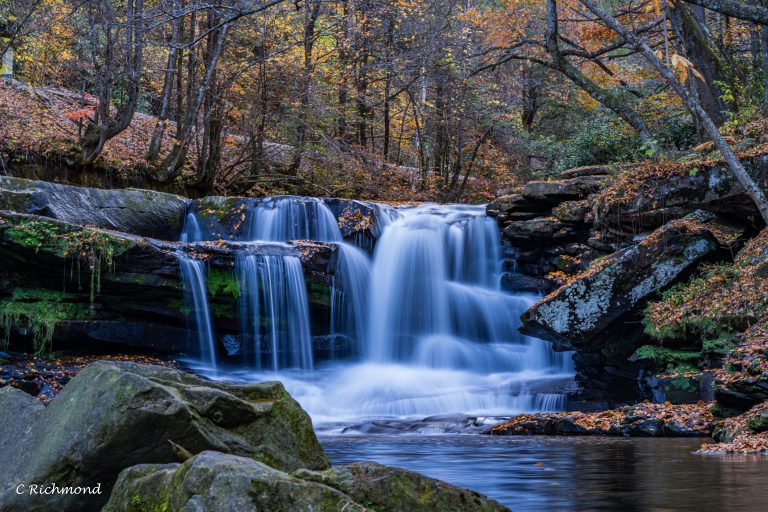A Beginner’s Guide to Black and White Landscape Photography: 20 Tips
Unlocking the Art of Monochrome: The Essential Journey into Black and White Landscape Photography
In the world of fine art and nature photography, black and white landscape photos hold a revered place, evoking a range of emotions that color photography often leaves unexplored. As a seasoned landscape photographer, I’ve traversed through myriad hues and tones to find that the absence of color opens up depths of the scene that are often unseen. Through this article, you’ll uncover the timeless craft of creating stunning black and white landscape images, an art form popularized by greats like Ansel Adams and Edward Weston. Here, I impart 20 essential tips that I’ve honed over years of practice and observation, guiding you to not only appreciate the monochrome vision but to master the technique, allowing you to capture landscapes in black and white with the nuance and impact they deserve.
Tip 1: Understand Why Black and White Works Best for Certain Landscapes
Before you shoot in black and white, grasp why it works so well. Without color, the viewer is drawn into texture, tonal contrast, and the sheer soul of the photograph. In landscapes where color distracts, stripping it away can unearth a timeless scene that speaks volumes.
Tip 2: Learn to See the World in Black and White
Converting the photo to black and white starts with your vision. Begin to see the world in tones—where the light falls, how the shadows form. This shift in perspective is essential for finding the right landscape that will translate well into monochrome.
Tip 3: Study the Masters
Examine famous black and white landscape photographers like Ansel Adams and Edward Weston. Analyze their approach to photography, how they use light, and how they compose their shots. Their work is not just a photograph; it’s fine art, and there’s much to learn from their legacy.
Tip 4: Embrace the Rule of Thirds
In landscape photography, the rule of thirds is a fundamental compositional technique. By aligning the subject with the guidelines and their intersection points, it allows for a balanced, engaging black and white landscape photo.
Tip 5: Seek Out Strong Contrast
Great black and white landscape photography often relies on strong contrast. Look for scenes where the difference between the lightest and darkest elements is pronounced. This will help you create a photo with impact.
Tip 6: Pay Attention to Texture and Detail
Good black and white landscapes reveal the texture and detail of the scene. Whether it’s the bark of a tree or the ripples in a stream, these elements become the stars of your photograph.
Tip 7: Experiment with Long Exposure Photography
Using a neutral-density filter for long exposure can turn the moving elements of nature into a smooth, ethereal part of your landscape photo. This technique works wonders in black and white photography, emphasizing motion against the stillness of the surrounding scene.
Tip 8: Utilize Filters to Enhance Tonal Quality
Filters aren’t just for color photography. A red filter, for instance, can darken the blue sky, providing a dramatic backdrop for your monochrome landscape images and better landscape tonality.
Tip 9: Don’t Be Afraid to Use High ISO
While it’s common to aim for the lowest possible ISO to avoid noise, black and white images can benefit from a little grain, giving them a classic, film-like quality. Sometimes, what photography doesn’t show in smoothness, it can compensate for in character.
Tip 10: Always Shoot in RAW
To have the greatest control in post-production, you should always take black and white photos in RAW. This format retains all the image data, allowing you to better manipulate the photo to black and white conversion later on.
Tip 11: Pay Attention to the Sky
The sky in landscape photography is not something to overlook. In black and white, it can become a dynamic element of the composition or serve as negative space, offering balance to the detailed elements below.
Tip 12: Find the Right Balance of Pure White and Pure Black
Every landscape photo should have a balance of pure white and pure black to provide the full tonal range that black and white landscapes demand. This will give depth to your black and white landscape photographs.
Tip 13: Consider the Golden Hour
Just like in color landscape photos, the golden hour brings a quality of light that is beneficial for black and white landscape photography as well. It accentuates shadows and highlights, offering a range of tonal values.
Tip 14: Master Post-Processing for Black and White Conversion
Digital photography allows for sophisticated black and white conversion in post-processing. Learning how to manipulate tonal ranges and contrast can transform good b&w landscape photos into great ones.
Tip 15: Focus on Composition More Than Ever
Without color to guide the viewer’s eye, composition becomes even more critical. Use leading lines, the interplay of light and shadow, and compositional techniques like the rule of thirds to guide your audience through the photograph.
Tip 16: Incorporate a Human Element for Scale
Sometimes adding a human element to your black and white landscape photos can provide a sense of scale and add an emotional component to the image.
Tip 17: Always Use a Tripod for the Best Results
Sharpness is key in b&w landscape photography. A tripod ensures that your camera is stable, especially during long exposures, and is an indispensable tool for any serious landscape photographer.
Tip 18: Seek Out Unique Perspectives
Challenge yourself to look beyond traditional viewpoints. Climbing higher or getting closer to the ground can yield a more interesting and good black and white landscape photo.
Tip 19: Be Patient and Wait for the Perfect Moment
Nature and landscape photography are often about capturing a moment, and patience is vital. Wait for the right lighting or for the wind to calm, which can make the difference in your monochrome imagery.
Tip 20: Don’t Rely on Post-Processing to ‘Fix’ Everything
While post-processing is powerful, a better approach to photography is to get as much right in-camera as possible. It will lead to stronger images and a more rewarding photographic experience.
In summary, these tips are but a gateway into the vast and gratifying realm of black and white landscape photography:
- Train your eye to see in tones and textures.
- Embrace the rules of composition like the rule of thirds.
- Seek out strong contrast and intricate detail.
- Don’t shy away from using filters and long exposures.
- Be patient and always aim to capture the moment as best as you can in-camera.
By integrating these principles into your workflow, you’ll find that black and white landscape photography can not only broaden your creative horizons but also allow you to create profound and lasting work that resonates on a deeper level. It’s not just about capturing landscapes without color; it’s a whole different way of seeing the world.




